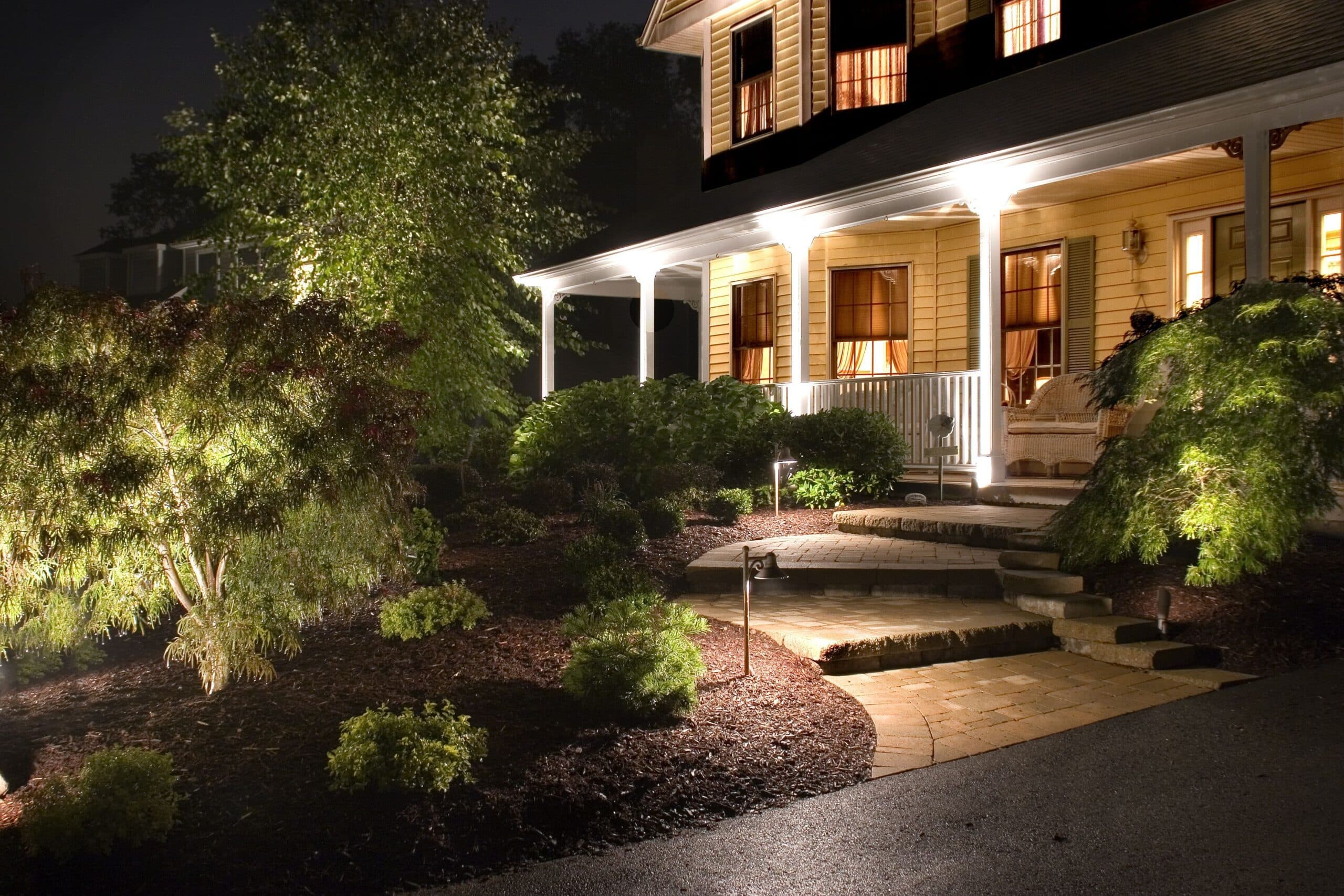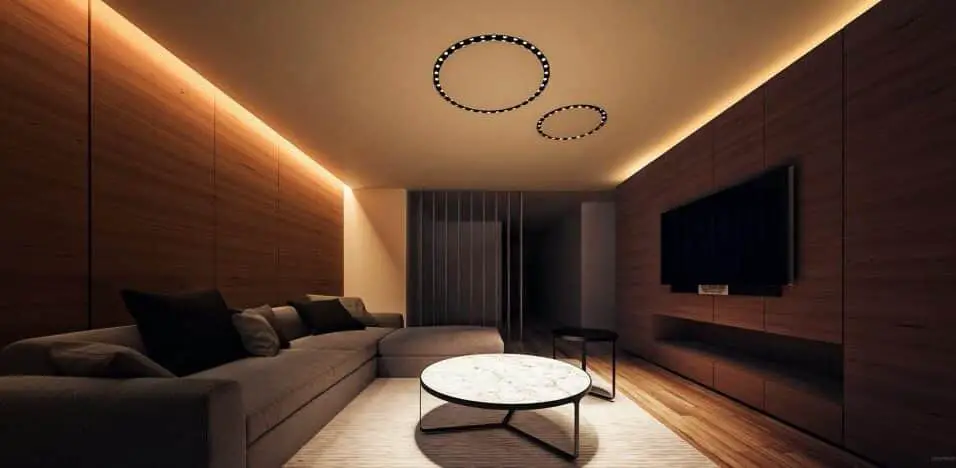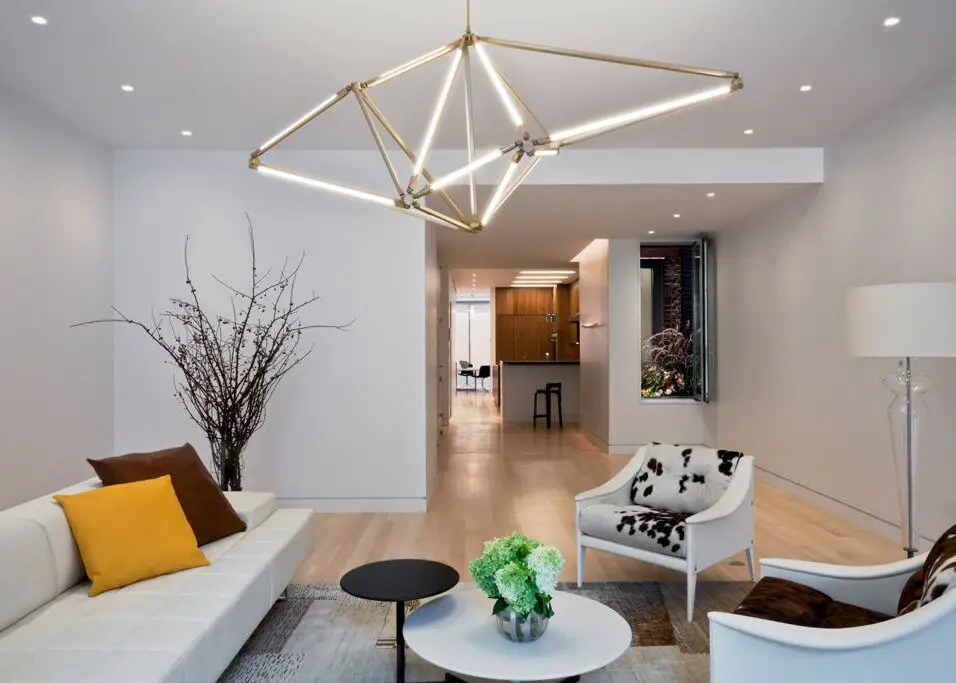How To Design Landscape Lighting
Introduction
How To Design Landscape Lighting: When it comes to crafting an inviting outdoor ambiance and accentuating the beauty of your landscape, well-designed landscape lighting can make all the difference. In this guide, we present three distinct paraphrased introductions that delve into the art and science of landscape lighting design. Discover the transformative effects of carefully planned illumination, creating stunning visual displays while enhancing safety and functionality in your outdoor spaces.
Unleash the potential of your outdoor spaces with the artful application of landscape lighting. Whether you aim to highlight specific features, create a cozy atmosphere, or ensure safe navigation, a well-designed lighting scheme is the key. This comprehensive guide provides three paraphrased introductions, each offering valuable insights and strategies for designing landscape lighting that complements your property’s unique aesthetics and serves design fall its practical purpose.
Illuminating your outdoor environment with thoughtfully designed landscape lighting can completely elevate its charm and functionality. Crafting a well-balanced lighting plan involves considering various factors, such as the type of fixtures, placement, and the overall atmosphere you wish to achieve. In this guide, we present three paraphrased introductions that explore the art of landscape lighting design, helping you turn your outdoor spaces into captivating and inviting retreats after dusk.
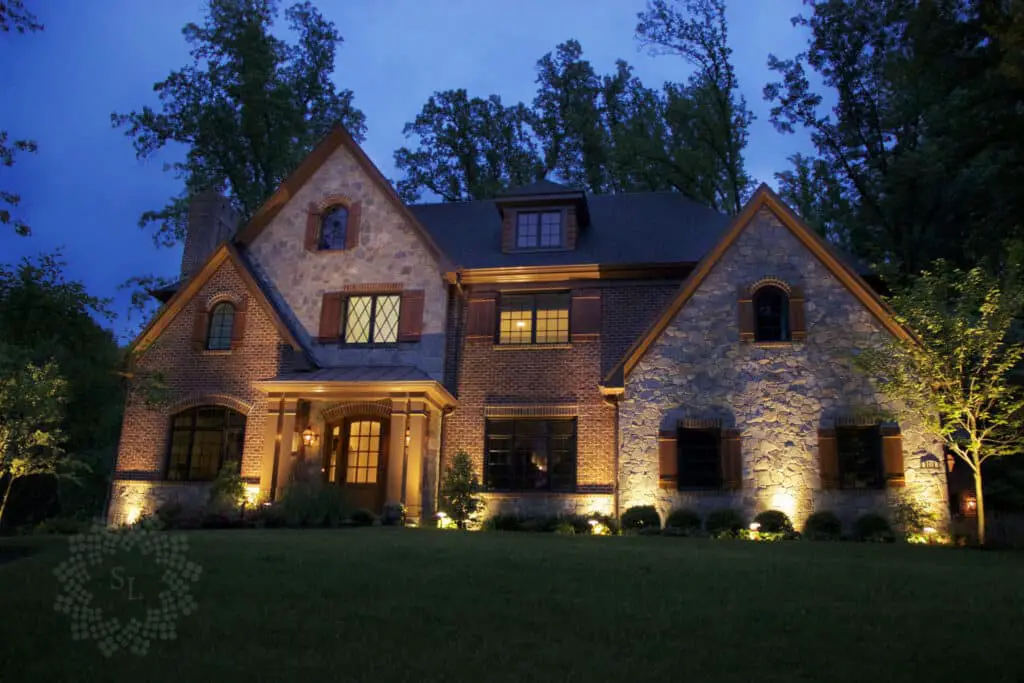
What is lighting design in landscape?
Landscape lighting or garden lighting refers to the use of outdoor illumination of private gardens and public landscapes; for the enhancement and purposes of safety, nighttime aesthetics, accessibility, security, recreation and sports, and social and event uses.
Lighting design in landscape refers to the intentional and artistic arrangement of outdoor lighting fixtures to enhance the aesthetic appeal, functionality, and safety of outdoor spaces. It is a specialized field that combines elements of architecture, artistry, and engineering to create visually stunning and practical lighting schemes for gardens, pathways, patios, and other outdoor areas.
The primary goal of landscape lighting design is to showcase the natural beauty of the landscape while providing ample illumination for various activities during nighttime hours. Soft, diffused lighting may create a romantic and relaxing atmosphere, while more focused and directional lighting can emphasize specific architectural features or focal points.
Beyond aesthetics, lighting design in landscape also serves practical purposes. It enhances safety by illuminating potential hazards like steps, uneven terrain, or obstacles. Additionally, properly placed lights can deter intruders and improve security around the property.
How to design a lighting system?
The steps are: identifying the requirements, determining the method of lighting, selecting the lighting equipment, calculating the lighting parameters and adjusting the design, determining the light control system, checking the fittings and finally checking the installation when finished.
Designing a lighting system requires careful consideration of various factors to achieve an optimal balance between functionality, aesthetics, and energy efficiency. A well-planned lighting design can transform spaces, enhance productivity, and create a welcoming ambiance.
The first step in the design process is to understand the purpose of the space and the activities that will take place there. This will help determine the type and intensity of lighting needed. For example, task lighting is essential in work areas, while ambient lighting sets the overall mood in living spaces.
Next, consider the light fixtures and bulbs to be used. LED technology is a popular choice due to its energy efficiency and long lifespan. The color temperature of the bulbs also affects the atmosphere, with warm tones creating a cozy feel, and cooler tones promoting alertness.
How many watts for landscape lighting?
The best wattage for outdoor lights is 40 watts and lower. Up to 40 watts is ideal for lighting pathways, garden beds, and other landscape areas. 40 to 80 watts are great for brightening areas like driveways, smaller yards, and the inside of your home.
When planning for landscape lighting, determining the appropriate wattage is a crucial step to achieve the desired ambiance and functionality. For accent lighting or to highlight specific features like trees, sculptures, or architectural elements, lower wattage bulbs are often sufficient. Bulbs with wattages ranging from 5 to 50 watts can create a soft and subtle glow, adding a touch of elegance to the landscape.
When it comes to path lighting, safety and visibility are paramount. Path lights typically range from 10 to 100 watts, illuminating walkways and driveways with a warm, inviting glow while ensuring safe passage during the evening. These powerful fixtures ensure ample illumination and deter potential intruders.
What is the voltage of landscape lighting?
12V
What voltage do landscape lights use? 12V is the most common option for residential outdoor lighting. Known as “low voltage,” it is achieved by converting standard 120V current into 12V through use of a transformer.
The voltage of landscape lighting typically varies depending on the type of lighting system being used. There are two common voltage options for landscape lighting: 12 volts and 120 volts.
12 Volts
Low-voltage landscape lighting systems operate on 12 volts. These systems are popular for their safety and energy efficiency. They use a transformer to step down the standard household 120-volt electrical supply to the lower 12-volt output required for the lights. The low voltage makes installation and maintenance safer, as the risk of electrical shock is reduced. Additionally, low-voltage systems are generally easier to install and can be adjusted or expanded more flexibly.
120 Volts
High-voltage landscape lighting systems run directly on the standard household electrical supply of 120 volts. These systems are usually found in commercial settings or areas where higher light intensity is required. They often use more powerful fixtures and bulbs, making them suitable for illuminating larger spaces or emphasizing specific architectural features. However, the installation of high-voltage systems can be more complex and should be carried out by a licensed electrician.
Ultimately, the choice of voltage for your landscape lighting will depend on your specific needs, budget, and the scope of your project. Both options have their advantages, and selecting the appropriate voltage will help create the perfect ambiance and functionality for your outdoor space.
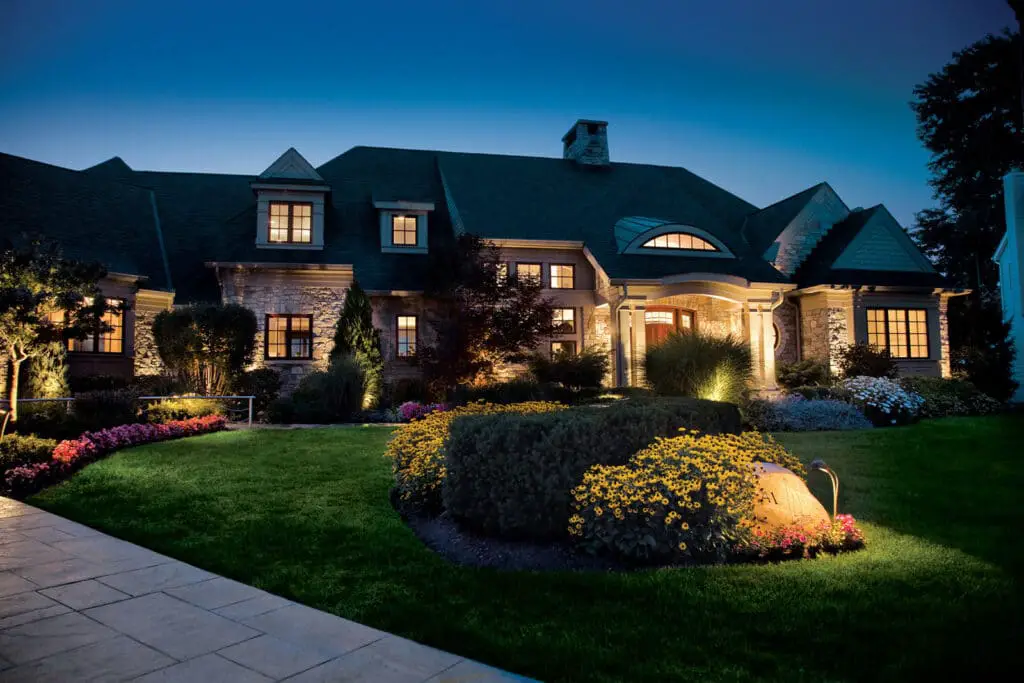
How do you size a landscape lighting wire?
The common wires for landscape lighting are 8-, 10-, 12-, 14-, or 16-gauge wires. We recommend 12-gauge or 10-gauge wire for long distances. This is done to avoid voltage drops. The greater the distance between the transformer and its power supply, the more resistance arises in the circuit, causing the voltage to fall.
Sizing landscape lighting wire is a crucial aspect of any outdoor lighting project to ensure safety, efficiency, and optimal performance. Choosing the right wire gauge is vital as it directly impacts the transmission of electricity to the fixtures. Here are some essential factors to consider when sizing landscape lighting wire:
Load and Voltage
Calculate the total wattage of all the lighting fixtures on the circuit. Determine the voltage of the system, which is typically low-voltage (12V or 24V), to prevent voltage drop over long cable runs.
Distance
Measure the length of the wire required to connect the fixtures from the power source. Longer cable runs result in increased resistance, which can lead to voltage drop.
Wire Gauge
Refer to wire gauge charts or voltage drop calculators provided by manufacturers to choose the appropriate wire size based on the load and distance. Thicker wires (lower gauge numbers) offer less resistance, reducing voltage drop.
Multiple Runs
For large landscape lighting setups, consider dividing the system into multiple runs, each with its power source. This helps distribute the load and maintain consistent illumination.
Burial Depth
If burying the wire underground, ensure it’s buried at the recommended depth to protect it from damage and comply with local codes.
Future Expansion
Account for potential future expansion when choosing the wire gauge, as adding more fixtures may increase the overall load.
How does 12V landscape lighting work?
Low voltage landscape lights are powered through a transformer that lowers the regular voltage down to 12-volts. These systems are safe to work with, energy efficient and easy to install and move. They are plugged into a GFCI outlet outside.
12V landscape lighting operates on a low-voltage electrical system, designed specifically for outdoor environments. It is a popular choice for illuminating gardens, pathways, and outdoor spaces due to its safety, versatility, and energy efficiency. The system comprises several key components that work together to create a well-lit and visually appealing outdoor setting.
The heart of the 12V landscape lighting system is the transformer, which converts standard household voltage (usually 120V) to a safer 12V. These fixtures come in various designs, such as spotlights, path lights, floodlights, and accent lights, catering to different illumination needs.
How many watts are low voltage landscape lights?
outdoor lighting. typically draw 4 to 7 watts of power. and the length of cable required for the job.
Low voltage landscape lights typically range from about 1 watt to 50 watts, depending on their size, design, and purpose. Compared to traditional high voltage lighting systems, low voltage landscape lights offer numerous advantages. They are cost-effective, as they consume significantly less power, resulting in reduced electricity bills over time. Additionally, their lower energy requirements make them an environmentally-friendly option, contributing to a greener and more sustainable outdoor lighting solution.
The wattage of low voltage landscape lights directly influences their brightness and illumination coverage. Smaller lights with lower wattage are ideal for subtle accents, while higher wattage options provide brighter and more focused lighting. When planning a landscape lighting project, it’s essential to consider the intended purpose of each light and choose the appropriate wattage accordingly.
Do landscape lights need a transformer?
To install low voltage landscape lighting, you will need a transformer to reduce the 120-volt output from your home electrical system to the 12 volts used by low voltage landscape lights.
Landscape lights often require a transformer to function properly and safely. The transformer plays a crucial role in converting the standard 120-volt household electricity into a lower voltage, typically 12 or 24 volts, which is suitable for landscape lighting systems. This step-down in voltage is necessary to ensure the longevity and efficiency of the lights.
The main reason for using a transformer is safety. Lower voltage systems significantly reduce the risk of electric shock, especially in outdoor environments where moisture and exposure to the elements are common. Moreover, the reduced voltage also helps prevent damage to the light fixtures, ensuring they have a longer lifespan and function optimally.
Transformers also offer versatility in lighting design. They allow for the installation of multiple lights and offer the flexibility to adjust the intensity of the illumination. This way, you can create various lighting effects and highlight specific features in your landscape, be it a stunning garden, walkway, or architectural elements. Compared to traditional high voltage lighting systems, low voltage landscape lights offer numerous advantages. They are cost-effective, as they consume significantly less power, resulting in reduced electricity bills over time. Additionally, their lower energy requirements make them an environmentally-friendly option, contributing to a greener and more sustainable outdoor lighting solution.
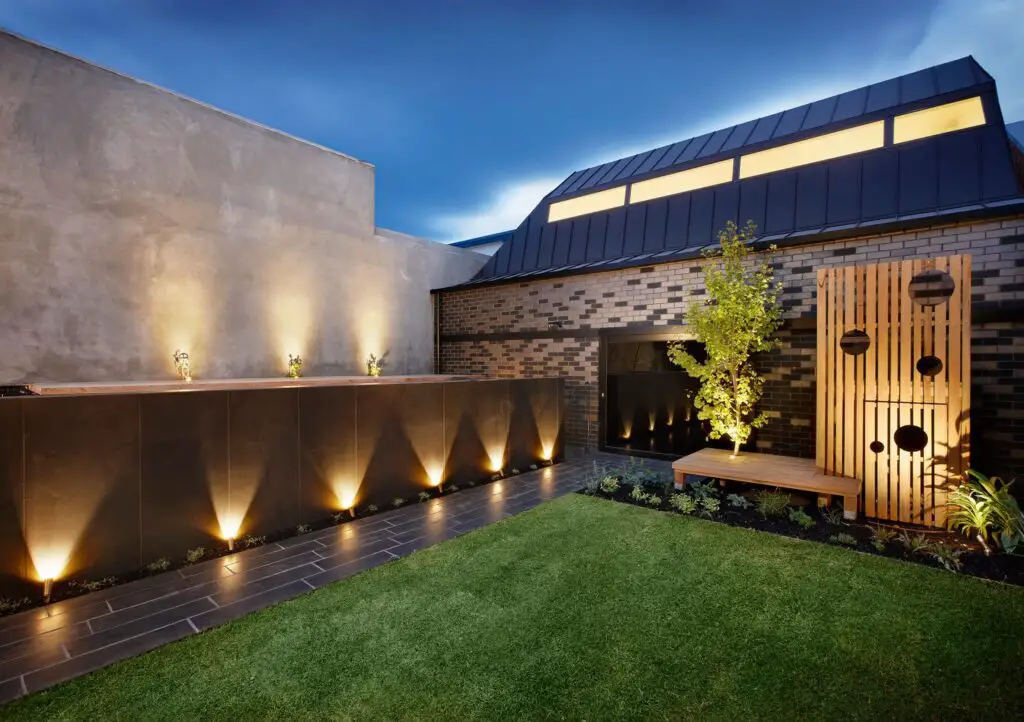
Conclusion
Mastering the art of designing landscape lighting is essential for creating a captivating and functional outdoor space. By considering the various techniques and factors explored in this guide, you can achieve a harmonious balance between aesthetics, safety, and practicality. Thoughtfully illuminating your landscape enhances its beauty, extends its usability, and adds a touch of enchantment to your evenings.
As we come to the end of this guide on how to design landscape lighting, it becomes evident that proper planning and implementation are key to a successful outdoor lighting project. By adopting the principles and ideas discussed here, you can transform your landscape into a stunning and inviting area after dark. Remember, with a well-thought-out design, you can create the desired ambiance and showcase the beauty of your property’s features.
To sum up, landscape lighting design is a skill that not only enhances the visual appeal of your property but also contributes to its overall functionality and safety. The insights shared in this guide serve as a foundation for creating mesmerizing outdoor environments. So, go ahead and let your creativity illuminate the night! Compared to traditional high voltage lighting systems, low voltage landscape lights offer numerous advantages. They are cost-effective, as they consume significantly less power, resulting in reduced electricity bills over time. Additionally, their lower energy requirements make them an environmentally-friendly option, contributing to a greener and more sustainable outdoor lighting solution.



